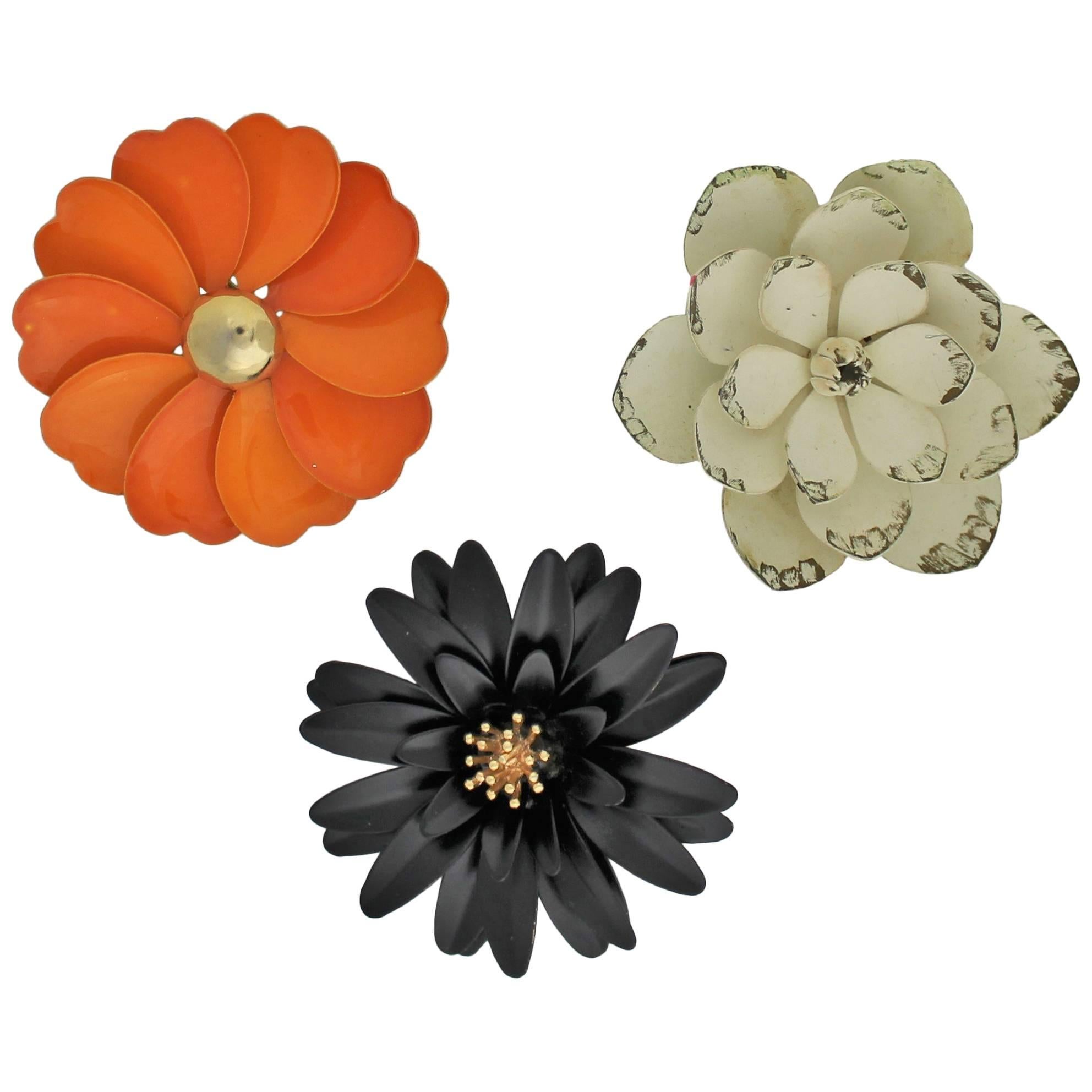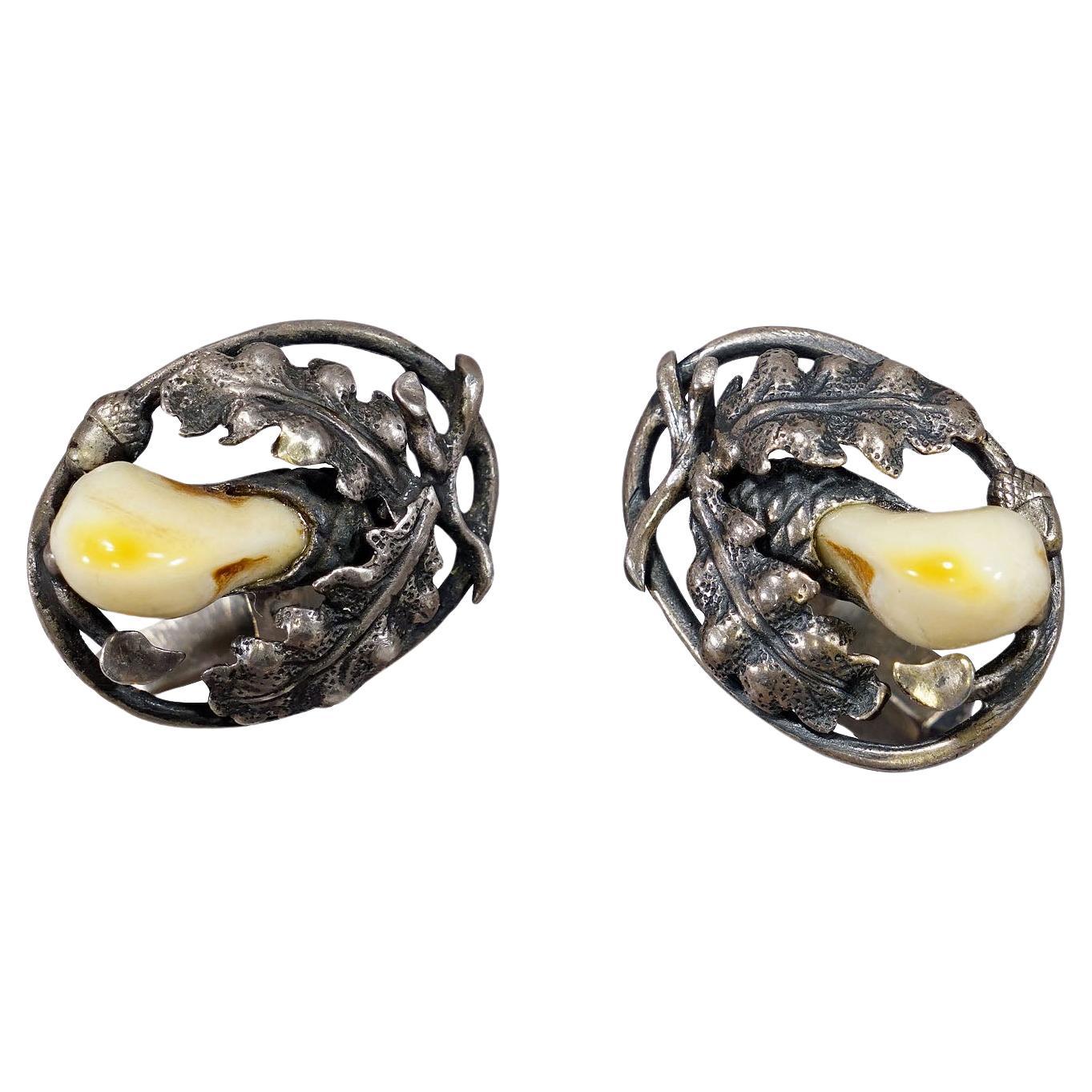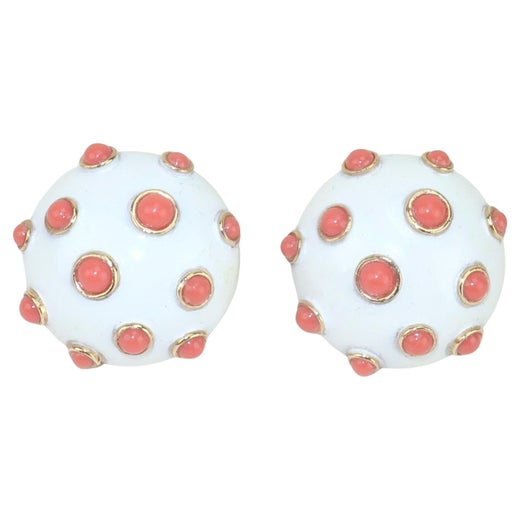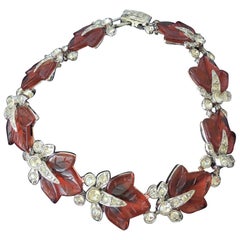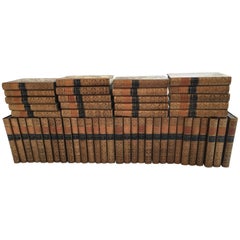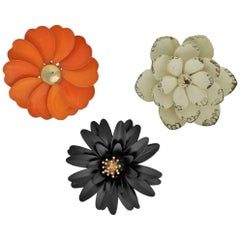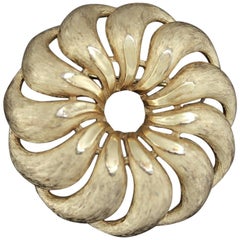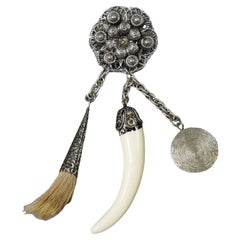Vintage Costume Jewelry Set by Trifari, circa 1960
About the Item
- Creator:Trifari (Designer)
- Dimensions:Height: 17 in (43.18 cm)Width: 0.5 in (1.27 cm)Depth: 0.13 in (3.31 mm)
- Sold As:Set of 3
- Materials and Techniques:
- Place of Origin:
- Period:
- Date of Manufacture:circa 1960
- Condition:Wear consistent with age and use. 3 Stones missing in the necklace, see photos.
- Seller Location:Southampton, NY
- Reference Number:1stDibs: LU2005312089571
Trifari
Costume jewelry maker Trifari is widely loved for its fine craftsmanship and complex designs for necklaces, brooches and other jewelry and accessories.
The company was formed in New York during the early 1920s, when its partners Gustavo Trifari (who descended from a family of jewelers), Leo Krussman and Carl Fishel (business associates in hair-ornament manufacturing) recognized, as other designers during the Art Deco era such as Gabrielle “Coco” Chanel had, that fashion trends for affordable jewelry for everyday wear represented an opportunity (and that the popularity of shorter hairstyles didn’t bode well for their haircomb business).
Initially called Trifari, Krussman and Fishel Jewelry (T.K.F.), the trio eventually shortened their brand’s name, at the suggestion of an advertising professional, to Trifari in order to evoke the romance of Gustavo’s native Italy.
The hiring of French designer Alfred Philippe as head designer in 1930 was pivotal to Trifari’s success. A master craftsman who had worked with both Cartier and Van Cleef & Arpels, Philippe set about establishing the same high-quality standards of materials and craftsmanship in the design of fashion jewelry and trained other Trifari artisans to do the same. Settings were delicate; crystals were hand set; designs, which sometimes featured dazzling floral motifs or exquisite depictions of marine life, were sophisticated and elegant, having both the look and feel of fine jewelry. First Lady Mamie Eisenhower wore a Trifari parure of faux pearls to her husband’s presidential inauguration in 1953 and Trifari glass pearls to his inaugural ball in 1957.
Before retiring in 1968, Philippe created Trifari’s most recognizable designs. In the 1930s, when the company was custom-making accessories for the stars of Broadway musicals, it was the crown motif: These brooches became so often identified with the brand that a crown was eventually incorporated into the trademark. In the 1940s, the “Jelly Bellies” inspired affection as well as knockoffs; these were animals, birds and insects sporting a “belly” of clear Lucite. Clip-Mates were another favorite and a technical marvel — two dress clips that, joined together, created a brooch.
Find a wide range of vintage Trifari jewelry on 1stDibs.
- ShippingRetrieving quote...Shipping from: Southampton, NY
- Return Policy
More From This Seller
View AllLate 20th Century Unknown Collectible Jewelry
Resin
Late 20th Century American Collectible Jewelry
20th Century European Collectible Jewelry
Lucite
Antique Mid-19th Century American Books
Leather, Paper
Early 20th Century American Historical Memorabilia
Brass
Early 20th Century Italian Art Nouveau Dining Room Chairs
Cane, Bentwood
You May Also Like
Mid-20th Century Mid-Century Modern Collectible Jewelry
Metal
Mid-20th Century German Folk Art Collectible Jewelry
Metal, Silver
Mid-20th Century American Mid-Century Modern Collectible Jewelry
Metal
Vintage 1950s German Rustic Collectible Jewelry
Metal, Silver
Vintage 1950s German Folk Art Collectible Jewelry
Metal, Silver
Vintage 1950s German Folk Art Collectible Jewelry
Metal, Silver
